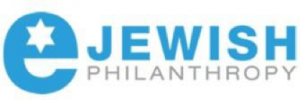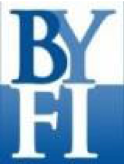
By Idit Klein, BYFI ‘89

July 1989: I am in Israel on the Bronfman Youth Fellowships and, for the first time, I am with a group of peers with whom I feel fully understood. Being a smart girl is sexy. Reading Molière is cool. My Bronfman friends laugh at my jokes.
I have a boyfriend, Daniel, and I think I am in love with him. We sneak away from the group to a park near Goldstein Youth Village, spread out a blanket, and have a picnic with some scrounged snacks. We bring a tiny boom box and play “Only You” by Yaz over and over while we kiss for the first time. It is sweet and exciting.
In our group, we all regularly say to one another “you’re so gay” or “that’s so gay.” When strong, outspoken women come to speak to our group – women who are perhaps plain looking and a bit masculine – we pass around notes with drawings of these women in the form of wildebeests. We snicker. We all assume these women are lesbians.
No one in our group challenges our behavior, including the adult staff.
In our first year of college, Daniel and I break up. Two years later I have my first relationship with a woman and I realize with wonder: “This is what it feels like to be in love.” I am amazed and in awe.
At Yale, where I am a student, I come out as bisexual and get involved in the lesbian, gay, and bisexual community. (This is the early to mid-90s, when transgender people and transgender issues are not yet part of the conversation at Yale or most anywhere.) I also come out in the Jewish community and feel largely supported and embraced. Fellow Yalie, Judith Rosenbaum (BYFI ‘90), along with Rabbi Sharon Cohen Anisfeld and Rabbi Jim Ponet, who work at Yale Hillel and by then are on the BYFI faculty, help me face the few Hillel leaders who are not supportive. I muster the courage to walk into the Kosher Kitchen for Shabbat dinner holding my new girlfriend’s hand; I try not to notice, or be bothered by, the many uncomfortable stares.
Around that time Daniel, my sweet Bronfman boyfriend, comes out to me. I’m happy for him and not surprised. Sometime later, another young man from our summer comes out.
In the late ‘90s, I hear through the grapevine about more Bronfmanim who have come out. I also learn that the content of the Bronfman experience has begun to change: a visit to the Jerusalem Open House, an LGBT community center and advocacy organization, is now part of the BYFI itinerary. Sharon Cohen Anisfeld and other straight allies on the faculty make it clear to the fellows that they support LGBT rights, have LGBT friends, and want the BYFI community to be inclusive.
Yet I also keep hearing that Bronfmanim are coming out after their Bronfman summers, not during them. I meet alumni who don’t stay connected to BYFI in part because they’ve come out as queer and don’t feel confident that they will be embraced in this community.
In the mid-2000s, I start hearing about openly lesbian, gay, bisexual, and queer Bronfmanim who are out from day one of the program. As far as I know, there has yet to be an openly transgender Bronfman fellow during a BYFI summer and there have not been any openly LGBT faculty.
At the same time, Keshet, the organization I have led since September 2001, becomes an Alumni Venture Fund grantee and even wins the first Alumni Choice Award. This is enormously gratifying and moving to me as is the leadership demonstrated by Edgar and Adam Bronfman along with Dana Raucher, Ariel Groveman Weiner, Miriam Levine, the whole SBF team and staff at The Bronfman Fellowships, who demonstrate in word and deed their support for LGBT equality in the Jewish community and beyond.
And then it is the summer of 2012. I learn in late August that there were three openly queer participants in this year’s BYFI. When one of them said to the group, “I’m a gay Jewish teen. Where am I supposed to go to find support?” two of the adult staff said, in perfect unison, “Keshet!”
I also learn that Daniel Krane (BYFI 2012) read about Keshet in the BYFI Alumni Magazine before his finalist interview and got much more excited about BYFI as a result. He wasn’t yet out to any friends or family members, but he knew that this would be the year that he would come out. The visibility of LGBT support in BYFI promotional materials assured him that BYFI would offer him an Israel experience in which he could be his full self.
When I heard Daniel Krane’s story, I thought back to my BYFI summer in 1989 – a summer full of love, learning, wonder, and friendships that have lasted over twenty years. But it was also a summer when gay jokes, sexist snickers, and misogynist stereotypes went entirely unchecked. Had Daniel Krane been part of BYFI ’89, I don’t think he would have felt safe coming out. No one did.
Today, BYFI is a community that affirms LGBT inclusion. For some fellows, BYFI is now the first time they meet someone who is openly queer. For others, BYFI is the first community, Jewish or otherwise, that fully embraces them as their full selves, queer, Jewish, and everything else.
1989-2012: 23 years. It’s a blip on the arc of history, but for me, it is an exquisite glimpse of the kind of change we are seeing in the Jewish community and in the broader world. I know that much work still lies ahead, but I celebrate this glimpse of meaningful change. I savor and bless this moment of recognition.

Idit Klein is a 1989 alumnus of the Bronfman Fellowships. Idit has served as Executive Director of Keshet since 2001.
This post is part of a special series in recognition of the 25th Anniversary of The Bronfman Youth Fellowships in Israel.
http://ejewishphilanthropy.com/summer-loving-byfis-lgbt-journey/#sthash.rIhbcUqu.dpuf